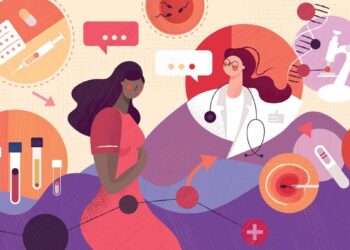The Secret Weapon: How Vaccination Shapes Our Healthier Future
Explore how vaccinations act as a cornerstone of preventive healthcare, safeguarding individuals and communities from preventable diseases.
1. The Resurgence of Measles: A Wake-Up Call
Measles, once nearly eliminated in many regions, has begun to reemerge as a significant public health concern. This troubling resurgence highlights how essential vaccinations are in preventing the spread of infectious diseases. It serves as a powerful reminder that the battle against such illnesses is continuous and requires persistent attention and effort from both individuals and health authorities. Without sustained vigilance, the progress made in controlling measles can quickly be reversed, leading to renewed outbreaks and increased health risks.
2. Unvaccinated Populations: The Epicenter of Outbreaks
A clear and concerning pattern emerges when examining measles outbreaks: the vast majority of cases occur among those who have not received vaccinations or whose immunization status is uncertain. This points to the heightened vulnerability of unvaccinated groups, who are far more susceptible to contracting and spreading the disease. It underscores the critical importance of ensuring widespread vaccination coverage to protect individuals and the broader community from outbreaks.
3. The Numbers Speak Volumes
The distribution of measles cases reveals a strong and consistent connection between vaccination status and disease occurrence. A significant proportion of reported infections are found in individuals without confirmed vaccination. This persistent trend illustrates the direct impact that vaccination has on reducing disease prevalence and preventing the spread of measles. The data thus emphasize the need for maintaining and improving vaccination rates to effectively control and ultimately eliminate measles.
4. Vaccine Hesitancy: A Growing Threat
Increasing reluctance or refusal to vaccinate, known as vaccine hesitancy, poses a serious challenge to public health initiatives aimed at controlling preventable diseases. This hesitancy weakens the community’s overall immunity, making it easier for outbreaks to occur and spread. Combating this issue requires focused efforts in education, transparent communication, and building trust between healthcare providers and the public to overcome fears and misinformation surrounding vaccines.
5. Vaccination: A Shared Responsibility
Maintaining high vaccination coverage is vital not only for protecting oneself but also for safeguarding the health of the entire community. By choosing to vaccinate, individuals contribute to building a collective shield that helps prevent disease transmission and protects those who are most vulnerable, such as young children and individuals with compromised immune systems. Vaccination is a collective duty that requires cooperation and commitment from everyone to ensure a healthier and safer society for all.
Lifestyle Tweaks for Longevity: Small Changes, Big Impact
Discover how small lifestyle adjustments can lead to significant gains in lifespan and overall health, especially when addressing socioeconomic disparities.
1. The Widening Gap in Life Expectancy
There is a noticeable and growing difference in how long people live across different segments of the population. This disparity in life expectancy is strongly influenced by factors such as income level and educational background. Individuals with higher incomes or more advanced education generally enjoy longer lives compared to those with fewer financial resources or lower levels of education. Over time, this divide has become increasingly evident, highlighting deep-rooted social inequalities that affect health outcomes.
2. Socioeconomic Factors at Play
The variation in life expectancy is closely connected to challenges related to preventive healthcare. Access to quality medical services, nutritious food, safe environments, and opportunities for healthy living often depend on one’s economic situation. These socioeconomic barriers create significant hurdles for many individuals to maintain good health. Addressing these issues requires systemic efforts to provide more equitable healthcare access and to support healthier lifestyle options for all communities, regardless of their economic status.
3. Impact of Educational Attainment
Education plays a crucial role in shaping health and longevity. People with higher levels of education tend to have better health literacy, enabling them to make informed decisions about their well-being. This knowledge, combined with increased opportunities for stable employment and income, contributes to longer life expectancy. The gap in lifespan between those with and without higher education reflects the protective influence education can have by promoting healthier behaviors, greater access to healthcare, and improved social conditions.
4. Small Changes, Big Impact
Positive changes in daily habits can lead to meaningful improvements in health and longevity for people across all walks of life. Simple but consistent adjustments such as adopting a balanced diet, engaging in regular physical activity, ensuring adequate restful sleep, and managing stress effectively can enhance overall well-being. These lifestyle modifications are accessible and beneficial regardless of one’s socioeconomic or educational background, offering a practical path to narrowing health disparities and improving quality of life for a broad population.
Decoding Risk: A Guide to Personal Health Assessment
Uncover the future of preventive care and learn how advanced screenings can help you take control of your health before symptoms even appear.
1. The Evolution of Preventive Healthcare
Preventive healthcare is transforming, placing greater emphasis on advanced screening technologies to proactively identify potential health risks. This approach allows for early intervention, potentially leading to better long-term health outcomes. Rather than waiting for symptoms to manifest, individuals can now leverage sophisticated diagnostic tools to gain deeper insights into their health status.
2. Individualized Health Profiles
Leading medical practices are now offering targeted assessments to create personalized health profiles. These profiles aim to reveal hidden vulnerabilities and guide tailored interventions before diseases progress. For example, carotid artery ultrasounds can assess cardiovascular risk, while neurological screenings can detect early signs of cognitive decline.
3. Beyond the Traditional Physical
There’s a growing recognition that traditional annual physicals may not be sufficient for detecting subtle yet significant health changes. Upgrading to advanced screenings is becoming increasingly important for those seeking a more comprehensive understanding of their health.
4. Early Detection: A Proactive Strategy
The shift towards advanced screenings reflects a proactive approach to healthcare. By identifying potential issues early, individuals and their healthcare providers can take timely action to mitigate risks and improve overall well-being. This strategy is particularly beneficial for those with specific risk factors or a family history of certain conditions. For instance, individuals with a family history of neurological disorders might benefit significantly from early neurological screening.













